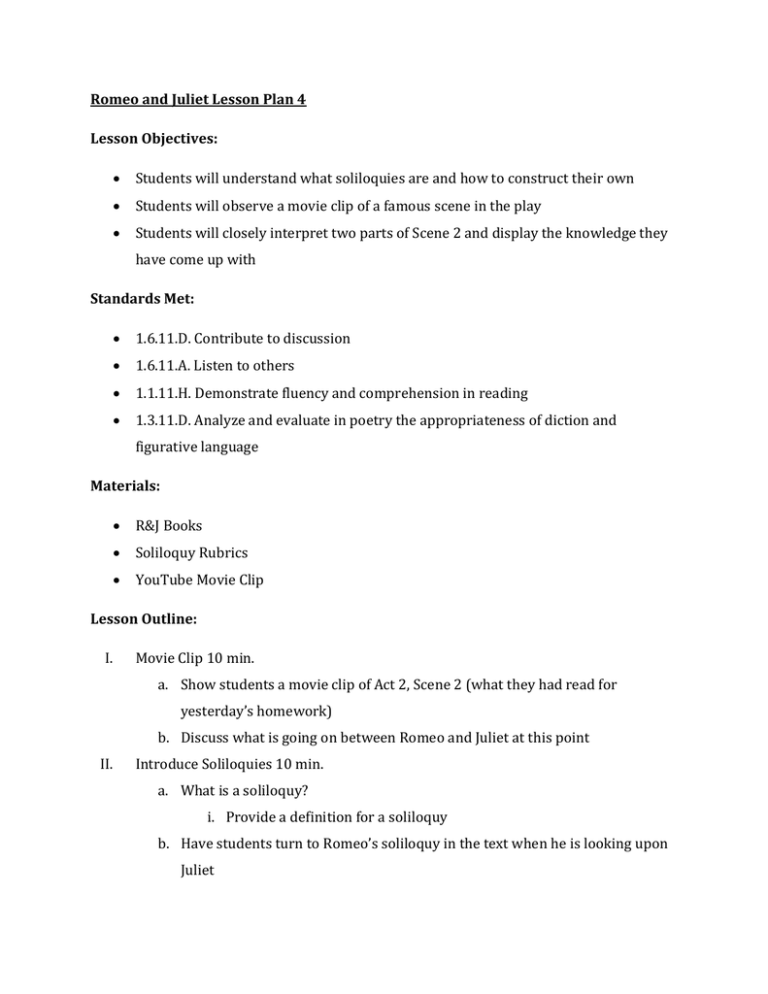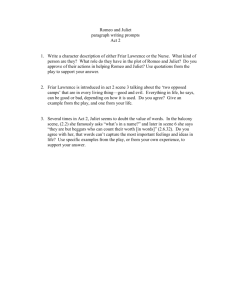Romeo and Juliet Lesson Plan 4
advertisement

Romeo and Juliet Lesson Plan 4 Lesson Objectives: Students will understand what soliloquies are and how to construct their own Students will observe a movie clip of a famous scene in the play Students will closely interpret two parts of Scene 2 and display the knowledge they have come up with Standards Met: 1.6.11.D. Contribute to discussion 1.6.11.A. Listen to others 1.1.11.H. Demonstrate fluency and comprehension in reading 1.3.11.D. Analyze and evaluate in poetry the appropriateness of diction and figurative language Materials: R&J Books Soliloquy Rubrics YouTube Movie Clip Lesson Outline: I. Movie Clip 10 min. a. Show students a movie clip of Act 2, Scene 2 (what they had read for yesterday’s homework) b. Discuss what is going on between Romeo and Juliet at this point II. Introduce Soliloquies 10 min. a. What is a soliloquy? i. Provide a definition for a soliloquy b. Have students turn to Romeo’s soliloquy in the text when he is looking upon Juliet c. Ask them what makes this passage different i. Does Romeo know that Juliet is listening to what he is saying? ii. Is he saying it to the audience, or is it something that he is planning on keeping private? III. Close Readings 20 min. a. Have students get into 4 groups b. Assign two groups to Romeo’s soliloquy c. Assign two groups to Juliet’s famous passage i. “O Romeo, Romeo, wherefore are thou Romeo? Deny thy father and refuse thy name! Or if thou wilt not, be but sworn my love, And I’ll no longer be a Capulet” d. Make sure students focus on the figurative language being used in Juliet’s lines; have other groups of students focus on the characteristics of a soliloquy in Romeo’s lines e. Have students create a poster board to tell the class what they have come up with f. Students share with the rest of the class what they have deciphered from these two parts of the scene IV. Introduce Personal Soliloquies 8 min. a. Explain that in one week students must turn in a soliloquy that they have created on their own b. Soliloquy can be about anything they want c. Pass out checklist for what the soliloquy must entail V. Assign Homework a. Read Act 2, Scenes 3-4 b. Complete a focused free-write in journals




